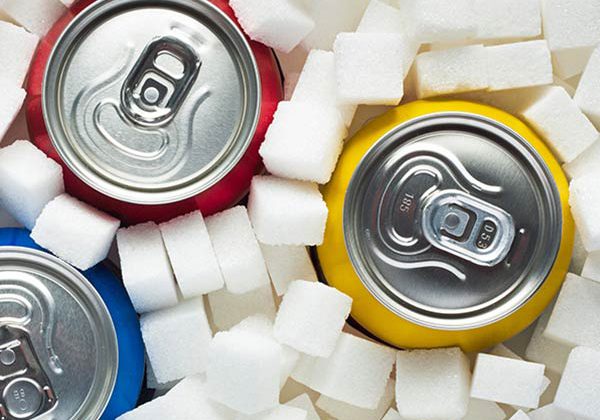A short review of the evidence base for Dead Sea Salt topical treatment and balneotherapy for skin and joint pathologies
David Grech
The beneficial influence of the Dead Sea and the clinical benefits of its mineral salts in different illnesses were first documented by the ancient historian Josephus Flavius about 2000 years ago. In recent years, scientific studies have confirmed a clinical evidence base for the lasting improvement of dermatological and rheumatological conditions following balneotherapy and topical treatments with Dead Sea salts and their commercial derivatives. Balneotherapy is properly defined as the use of bathing of the whole or parts of the body in mineralized water at a temperature of at least 20°C and with a mineral content of at least 1 g/l.1 Balneotherapy is usually associated with water temperatures of up to 34oC.
The chemical composition of Dead Sea salts is unique: high levels of magnesium (34%) and potassium (28%) cations and a significant concentration of bromide (0.4%) anions render it different from other mineral wells. The sodium content is comparatively much lower, at 18%.
The chemical effects of the Dead Sea salt treatment in psoriasis were first demonstrated in a series of studies between 1985 and 1995 by in vitro and in vivo human and animal studies.2 The studies demonstrated that Dead Sea minerals, applied through bathing or topical derivative products, penetrate psoriatic skin more than healthy skin, with psoriatic keratinocytes revealing elevated mineral content while retaining their normal structure. Furthermore, it was shown that the high levels of magnesium and potassium ions have a specific inhibitory capacity on the uncontrolled proliferation and differentiation of psoriatic dermis grown in tissue culture.
A double blind controlled study conducted in patients with Psoriasis Vulgaris also revealed a beneficial effect of balneotherapy with Dead Sea bath salts as compared to common salt.3 The percent reduction in the Psoriasis Area Severity Index (PASI) score following balneotherapy with Dead Sea bath salts at the end of treatment (3 weeks) and 1 month later was higher (34% and 43%, respectively) than that recorded following balneotherapy with sodium chloride (27% and 24% respectively). Immunohistochemical staining also showed a decrease in the normally high expression of TNF-α and IL-6 on psoriatic keratinocyes. The authors further suggested that balneotherapy with Dead Sea bath salts serves as an adjuvant anti-proliferative and anti-inflammatory therapy in Psoriasis Vulgaris.
In a multicentre study of 280 patients4, synchronous balneophototherapy with narrow band UV-B and bathing in Dead Sea Salt solution was found to be – based on investigator and patient feedback – superior to previous treatments undergone by the patients, with no severe side effects with positive perceptions by the patients that the treatment was pleasant and comfortable. A mean PASI improvement of 71% compared favourably to oral PUVA treatment (81%). This appears significant in patients with chronic diseases where multiple lifetime treatment courses may be necessary, because quality of life may be impaired not only by the disease but also by the treatment modalities.
Dead Sea salts, particularly the magnesium salt component, are also shown to be effective for atopic skin.5 Bathing in Dead Sea salt solutions significantly improved skin barrier function compared with the tap water-treated controls in eczema patient cohorts with elevated basal transepidermal water loss. Skin hydration was enhanced and skin roughness and redness as markers for inflammation were significantly reduced after bathing in the salt solution.
A positive influence on joint pain was also noted in the Schiffner study.4 This has been validated in randomized controlled trials of the therapeutic rheumatological effect of Dead Sea Salt balneotherapy.6 Once again balneotherapy was shown to decrease the levels of inflammatory mediators such as prostaglandin E2 as well as interleukin-1 and leukotriene B4. An interesting finding is that balneotherapy reduces the levels of catalase, superoxide dismutase, malondialdehyde protein and glutathione peroxidase. Balneotherapy is also associated with clinical improvement in rheumatological disease affecting mainly the vertebral spine and shoulder-neck area such as osteoarthritis, fibromyalgia, ankylosing spondylitis, rheumatoid arthritis and in chronic low back pain.
References
1 Pittler MH, Karaggülle MZ, Karagülle M, Ernst E. Spa therapy and balneotherapy for treating low back pain: meta-analysis of randomized trials. Rheumatol (Oxford) 2006; 45:880-4.
2 Shani J, Even-Paz Z, Avrach WW et al. Topical replacement therapy of psoriasis by dead Sea salts, evaluated by scanning electron microscopy and X-ray fluorescence. Dermatosen 1991; 39:49-55.
3 Halevy S, Giryes H, Friger M, Sukenik S. Dead sea bath salt for the treatment of psoriasis vulgaris: a double blind controlled study. J Eur Acad Dermatol Venereol 1997; 9:237-42.
4 Schiffner R, Schiffner-Rohe J, Wolfl G et al. Evaluation of a multicentre study of synchronous application of narrowband ultraviolet B phototherapy and bathing in Dead Sea salt solution for psoriasis vulgaris. Br J Dermatology 2000; 142:740-7.
5 Proksch E, Nissen HP, Bremgartner M, Urquhart C. Bathing in a magnesium-rich Dead Sea salt solution improves skin barrier function, enhances skin hydration, and reduces inflammation in atopic dry skin. Int J Dermatol 2005; 44(2):151-7.
6 Falagas M.E, Zarkadoulia E, Rafailidis P.I. The Therapeutic Effect of Balneotherapy: Evaluation of the Evidence from Randomised Controlled Trials. Int J Clin Pract 2009; 63(7):1068-84.




